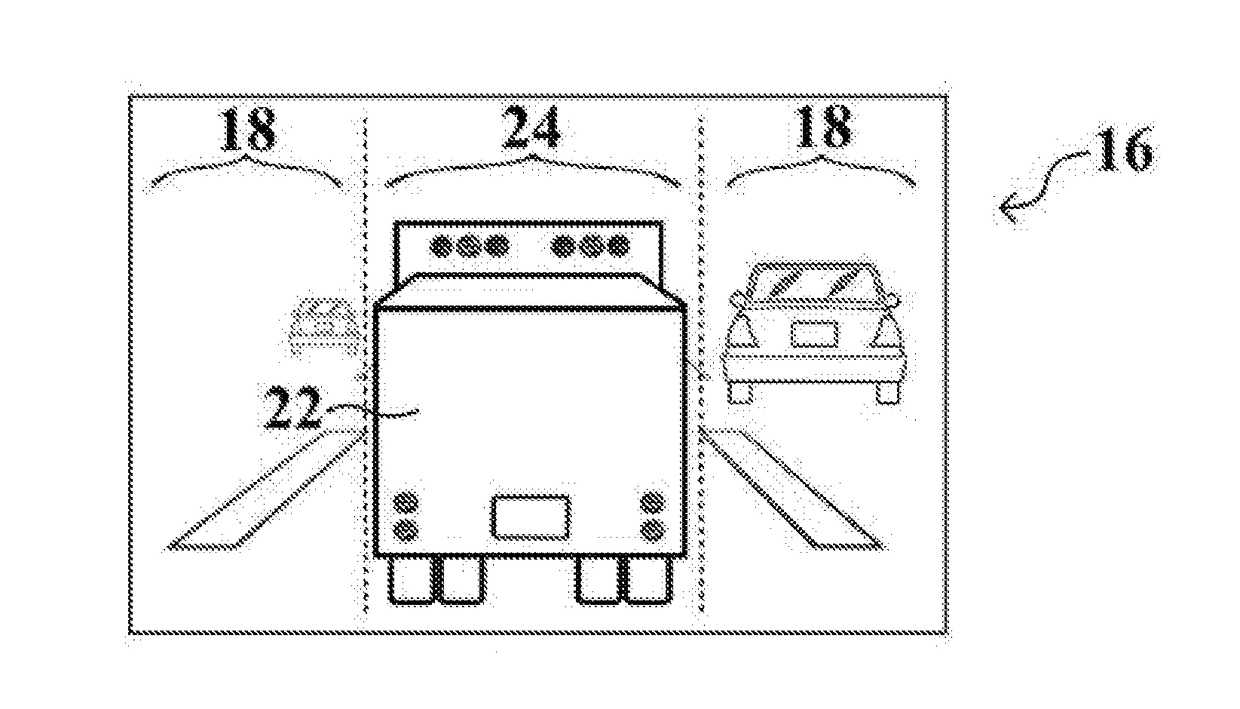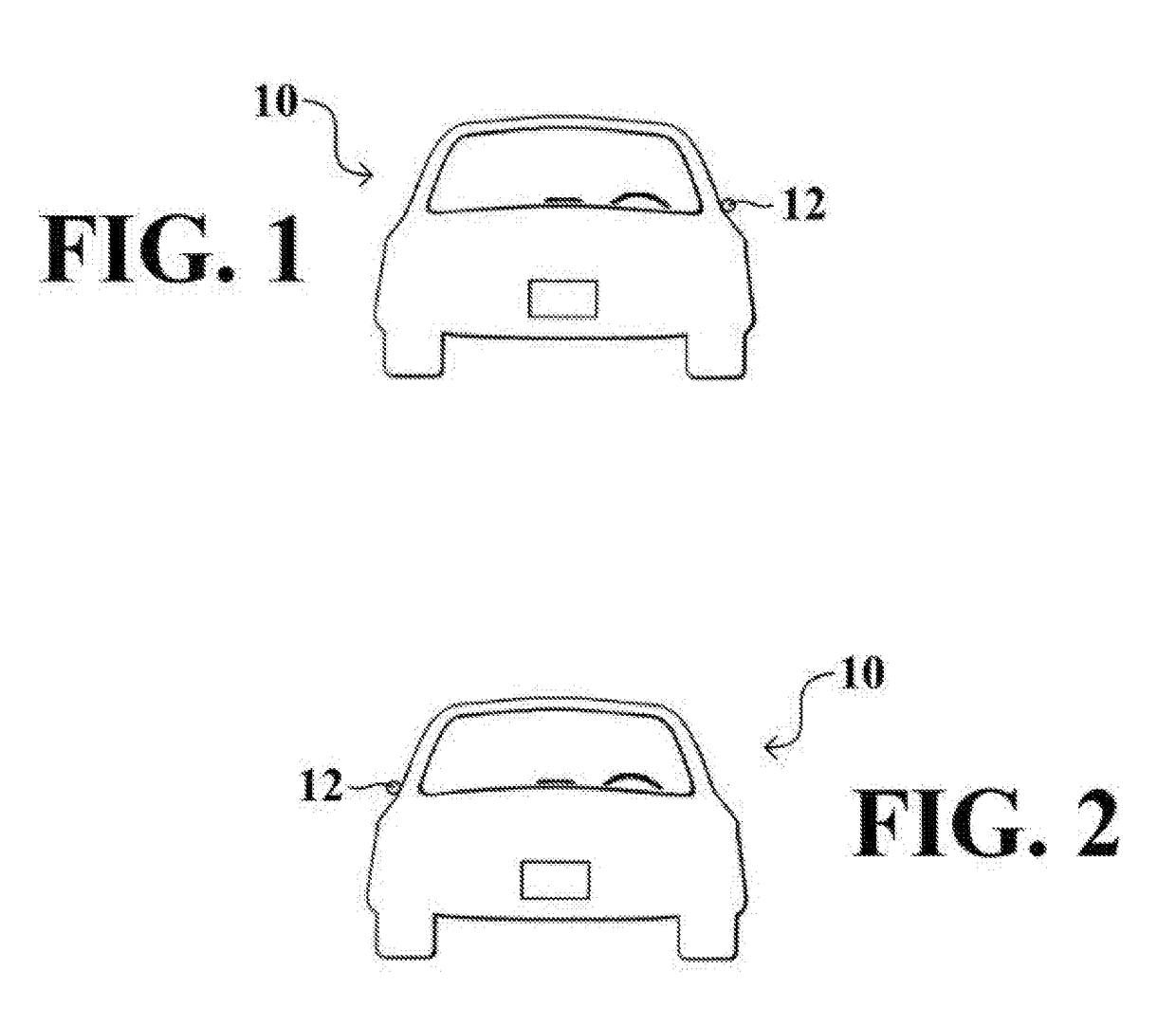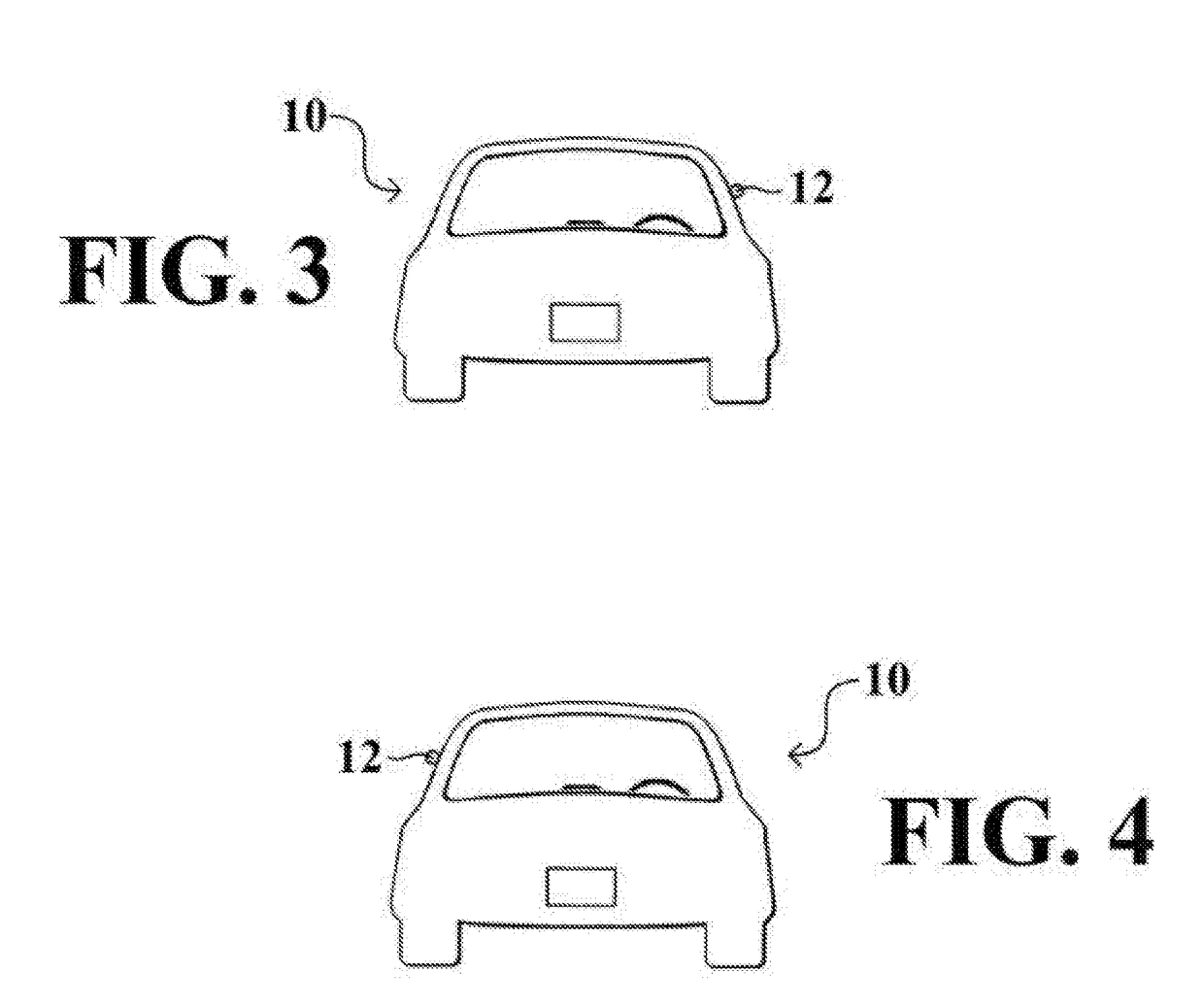Vehicular accidents are commonly caused during the passing and
overtaking of vehicles that are anterior to one's own vehicle.
Safety hazards are created when large and / or wide vehicles block the visual field available to the vehicle in the posterior position, obstructing the view of the driver.
Moreover, fatalities often occur from head-on collisions on two-lane roadways where passing is permitted, from rear-end collisions during lane changes where traffic has stopped in adjacent lanes, and from side collisions during left turns at intersections of multi-lane roadways, when the oncoming traffic is not visible to the driver.
In particular, the driver's
line of sight is more susceptible to obstruction by larger vehicles and prone to a blocked angle on the passenger side of the vehicle, making lane changes toward the passenger-side direction even more dangerous.
It is extremely problematic and presents a dangerous situation when drivers cannot see what is happening in front of them because a large vehicle, such as an SUV, van,
bus, or
truck, pulls in front of them on the roadway.
These large vehicles can block the driver's vision of the traffic further up the roadway.
The driver cannot get any advance warning by spotting
brake lights of vehicles in a blocked angle beyond the large vehicle.
When a driver slows down, they must rely on the proper and timely braking of the large vehicle for warning of road hazards, as the driver cannot see the roadway in a blocked angle beyond the large vehicle obstructing their vision.
However, even with ‘defensive driving,’ where a driver leaves a car length between them and the vehicle in front of them for every 10
miles per hour they are traveling, the blocked angle is created by larger vehicles that obstruct the forward
line of sight.
Prior art shows previous attempts at various
image capture devices and control systems, but none address the targeted objectives described herein which presently indicate an unmet need that has yet to be offered on the market.
One of the most dangerous situations confronting law
enforcement and emergency vehicles such as ambulances, fire trucks, and police cars, during high-speed emergency responses, is the lack of forward view due to a blocked angle.
Emergency responses often take place during high-traffic hours and may contain many obstructions alongside inclement weather and unpredictable road conditions.
This can create a problem when a quick response is necessary for a life-threatening situation.
These situations are very dangerous not only for the emergency and law
enforcement vehicles, but civilian vehicles, as well.
Furthermore, exterior mirrors protrude a substantial distance from the side of the vehicle, which makes maneuvering in tight spaces more difficult.
Exterior mirrors can impede driving when a driver cannot perceive vehicles, objects, or other road users in such blind spots without turning his or her body, which interferes with forward-looking visual activities.
Furthermore, where
blind spot detection can be covered by these devices, having a vehicular vision system that displays a forward view, as opposed to only a predetermined and restricted detecting range, is necessary when traveling at high speeds of 30, 40, 50, and 60 mph because the forward adjacent lane may contain slow or stopped traffic which would not allow for a car having an obstructed view and changing lanes to decelerate in enough time to come to a complete stop, thus resulting in an accident.
The prior art displays many
image capture and display systems that present views of the blind spots and surrounding areas of a vehicle that do not provide the necessary forward line of
sight including areas in a blocked angle caused from an obstruction in front of a vehicle.
A constant display on a display system is more reliable as multiple views can crowd a display system, creating a visual burden and causing
confusion as to which direction is being viewed by the driver.
Moreover, view selection adds operational burden to the driver if they have to select the view to be displayed.
Still, other prior art links a display system to the activity of a turn
signal which can cause
confusion on the roadway when used unnecessarily or excessively to check adjacent lanes.
While these devices fulfill their respective, particular objectives and requirements, the aforementioned prior art does not disclose the present vehicular vision system.
 Login to View More
Login to View More  Login to View More
Login to View More 


